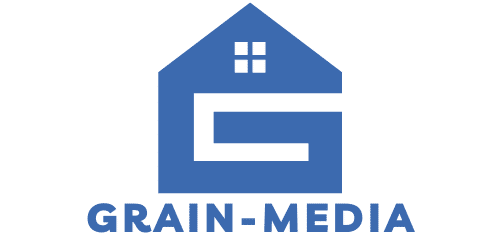Bilingual education in our schools has long been heralded as a powerful tool for fostering cognitive development and improving literacy skills. For children with dyslexia, however, the question often arises: How can they navigate the complexities of learning two languages when they face struggles with one? The answer, according to numerous findings in the field, is not only that they can, but that they may even reap unique cognitive benefits in the process. This article will delve into the ways in which bilingual education can enhance cognitive, academic, and literacy skills in children with dyslexia.
The Intersection of Bilingualism and Dyslexia
The intersection of bilingualism and dyslexia is a rich area of research. The more we explore it, the more we uncover the unique ways in which bilingual education can support children with dyslexia.
Have you seen this : Can Wilderness Survival Training Enhance Self-Esteem and Leadership Skills in Adolescents?
Dyslexia, a learning disorder affecting reading and spelling, is often framed as a challenge to be overcome. Bilingual education, on the other hand, is seen as a potential advantage. These two concepts may seem incompatible at first glance, but recent studies suggest that they can indeed coexist. According to Google scholar and crossref databases, bilingual education can enhance cognitive abilities in children with dyslexia, leading to significant improvements in their learning skills and literacy levels.
Cognitive Enhancements in Bilingual Children with Dyslexia
Bilingualism offers numerous cognitive benefits, even for those who struggle with dyslexia. These cognitive enhancements are tied to the way the brain processes multiple languages.
In parallel : How Does a High-Fiber Diet Influence Gut Microbiota and Weight Loss?
Bilingual children are often better at multitasking, as they must constantly switch between two languages. This task-switching ability can significantly enhance cognitive flexibility, which can be beneficial for children with dyslexia. Additionally, research suggests that the constant mental workout involved in managing two languages can lead to improved working memory and executive function—skills that are typically challenging for children with dyslexia.
Multilingualism also fosters metalinguistic awareness, the ability to think about language abstractly. Metalinguistic skills, such as recognizing that a sentence is grammatically incorrect without knowing why, are often stronger in bilinguals. For children with dyslexia, these skills can provide a crucial framework for improving reading and spelling.
Bilingual Education and Reading Skills
Reading, a fundamental aspect of education, is often a difficult task for children with dyslexia. However, bilingual education may provide unexpected benefits in this area.
Learning to read in two languages can reinforce the basic phonological skills necessary for reading. Bilinguals often have superior phonetic awareness, which is the ability to recognize and manipulate the sounds in words. This is a critical skill for reading and is often a challenge for those with dyslexia.
Additionally, bilingual education can provide a child with two different approaches to reading. English, for example, is an opaque language, where the connection between letters and sounds is often inconsistent. However, many other languages are transparent, with a consistent letter-sound relationship. Reading in a transparent language can reinforce phonological skills and potentially transfer to reading in English.
The Impact of Bilingualism on Academic Performance
Beyond cognitive enhancements and improved reading skills, bilingual education can also positively impact overall academic performance.
The cognitive benefits of bilingualism, such as enhanced problem-solving skills and increased attention control, can translate into improved academic performance. Many studies have shown that bilingual children outperform monolingual children in various scholastic areas, including mathematics and science.
Moreover, bilingualism can offer children with dyslexia a unique advantage. As they grapple with dyslexia in their first language, learning a second language can offer them a fresh start, an opportunity to excel in a new academic area. This success can boost their confidence and motivation, leading to improved performance in other areas as well.
Conclusion
While bilingual education can certainly be a challenge for children with dyslexia, it should not be dismissed as an impossible task. The cognitive benefits, improved reading skills, and potential for enhanced academic performance make it a promising avenue for these children. It’s crucial to remember that with the right support and resources, children with dyslexia can not only succeed in a bilingual environment but thrive.
The Role of Executive Functioning in Bilingualism and Dyslexia
Executive functioning, a term often associated with attention control, working memory, and cognitive flexibility, plays a crucial role in both bilingualism and dyslexia. These cognitive abilities, which are tied to the brain’s prefrontal cortex, tend to be more developed in bilingual children than in their monolingual peers.
Developing two language systems simultaneously requires bilinguals to constantly manage their attention between two languages ‒ a skill commonly referred to as ‘task-switching.’ This is similar to the cognitive workout one might get from completing a round of ‘Simon task’ or incongruent trials, both of which involve switching attention between different sets of information.
Children with dyslexia often struggle with these activities due to inherent challenges in executive functioning. However, the mental exercise provided by bilingual education can help strengthen these weak areas. For instance, children with dyslexia who are bilingual may show improvements in working memory and cognitive flexibility, which are vital for managing the complexities of language learning.
Moreover, the cognitive benefits of bilingualism extend beyond language skills. Improved executive functioning can also support literacy development and other academic areas, leading to an overall ‘bilingual advantage.’
Dual Language Learning as a Confidence-Boosting Strategy for Children with Dyslexia
Learning a second language opens new doors for children with dyslexia. In many cases, it can serve as a confidence-boosting strategy that helps them overcome the challenges associated with their learning disorder.
Children with dyslexia often encounter setbacks in their first language, which can negatively impact their self-esteem and motivation to learn. However, learning a second language offers them a chance to start fresh. The success they achieve in this new language can boost their confidence and inspire them to sustain their efforts in other academic areas.
Dual language learning can also provide children with dyslexia with a unique sense of accomplishment. As they succeed in their second language, they develop a sense of competence and self-efficacy that can drive further academic success. This confidence can, in turn, enhance their resilience and ability to navigate the challenges of dyslexia.
Moreover, bilingual education can open up a world of cultural experiences and opportunities for children with dyslexia, further adding to the benefits bilingualism can provide.
Conclusion
In conclusion, bilingual education can offer children with dyslexia a range of cognitive benefits, from enhanced working memory and executive functioning to improved literacy and academic performance. Although bilingual education may pose some challenges, it is not an impossible task. With the right support, children with dyslexia can not only succeed in a bilingual environment but can also thrive in it.
The potential advantages of bilingual education for children with dyslexia are well worth further investigation and application. As we continue to explore the intersection of bilingualism and dyslexia, we can better understand how to optimize educational practices to support the unique needs and strengths of these children.
















